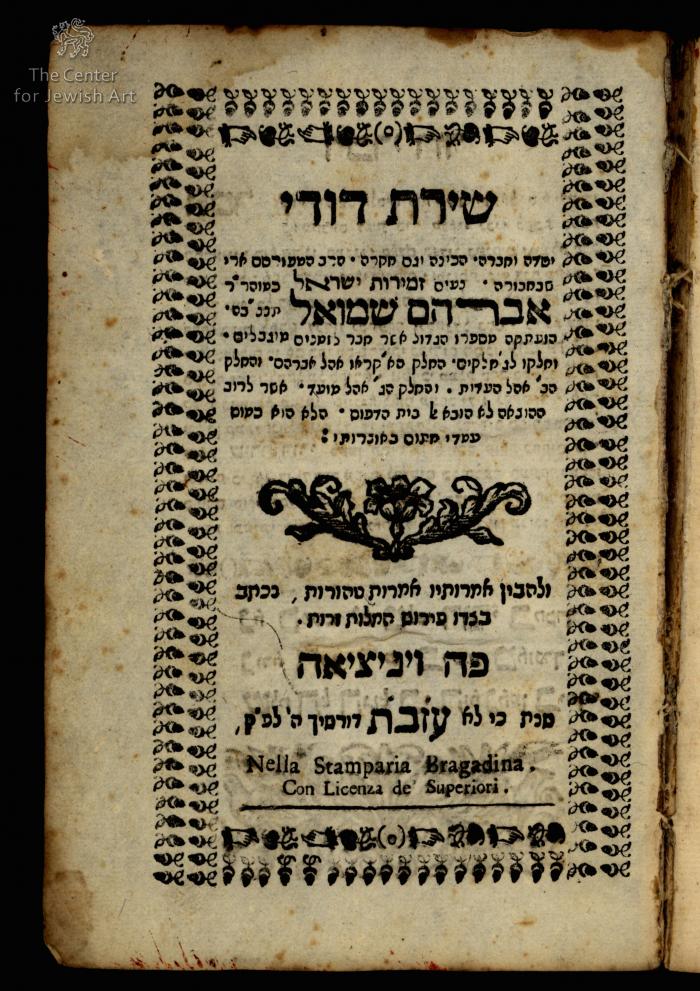Obj. ID: 37508 Shirat Dodi by Avraham Samuel, Venice, 1719

sub-set tree:
This text was prepared by William Gross:
Talmudist, preacher, and liturgical poet; flourished about the middle of the sixteenth century. He was a pupil of Abraham Motal, rabbi of Salonica, and later became teacher and preacher at Istib (Rumelia). He died childless about the year 1650. In order to prevent his name from falling into oblivion, Nissim ben Moses Cohen of Venice published, in 1719, a part of his manuscripts under the title, "Shirat Dodi" (The Song of My Friend), a versification of the halakot contained in Mishnah Shabbat. As poetry it has no value whatsoever, as might have been expected, considering the dry legal matter he had to handle.
In 1550 Alvise Bragadin established a Hebrew press in Venice, thus ending a brief monopoly in Hebrew printing in Venice enjoyed by Guistiani (after the closing of the Bomberg press). This press continued as one of Venice’s leading Hebrew print-shops, issuing Hebrew titles in the 18th C under several generations of Bragadins (the last of whom was Alvise III). Throughout the years, the output of the Bragadini press was considerable, and covered the gamut of Hebrew works. The press was somewhat unusual, however, in that the Bragadins themselves did not always take an active role in their printing-house, leaving its operation to other printers, and lending their name to other presses.
Only edition of this unusual attractive versified work on the halakhot in Mishnayot of tractate Shabbat by R. Abraham Samuel of Venice. At the end of the book is a pizmon le-Shabbat. Shirat Dodi has several attractive head and tail-pieces R. Abraham Samuel of Venice was a Talmudist, preacher, and liturgical poet. He flourished about the middle of the sixteenth century. He was a pupil of R. Abraham Motal, rabbi of Salonica, and later became teacher and preacher at Istib (Rumelia). He died childless about the year 1650. In order to prevent his name from falling into oblivion, R. Nissim ben Moses Cohen of Venice published, in 1719, a part of his manuscripts under the title, "Shirat Dodi" (The Song of My Friend), a versification of the halakot contained in Mishnah Shabbat. As poetry it has no value whatsoever, as might have been expected, considering the dry legal matter he had to handle. The authorship of the תוכחות, printed in the "Nagid u-Meẓawweh," p. 22 (Amsterdam, 1712), can not be ascribed to him. Inasmuch as the memorial formula זצ"ל is omitted after his name, the author of the tokaḥot must have lived after 1712, whereas Abraham Samuel died about 1650. The writer of these tokaḥot is called Abraham ben Samuel, and not Abraham Samuel.





